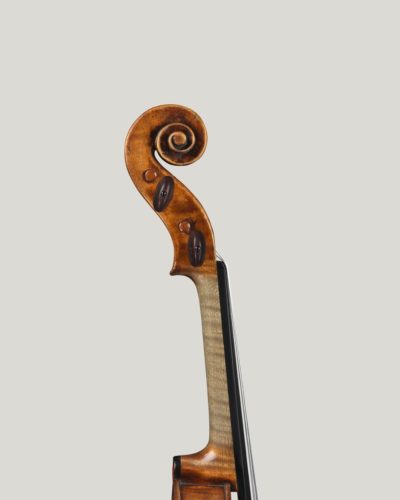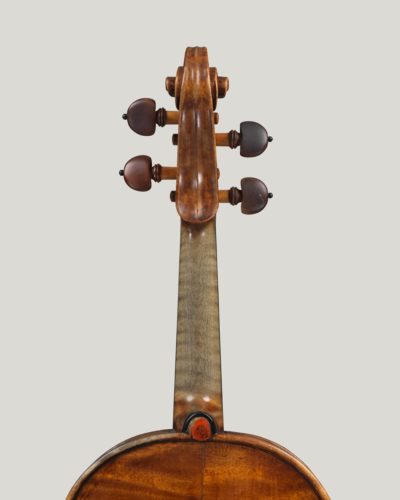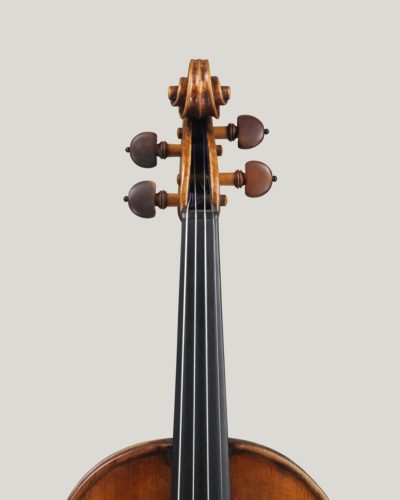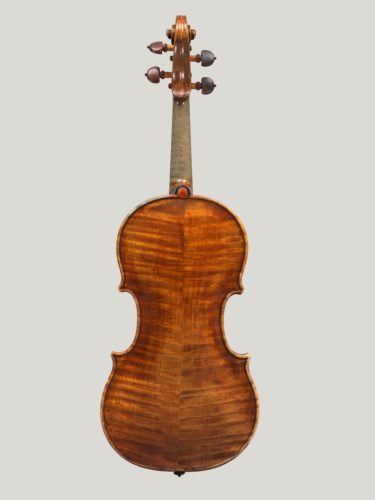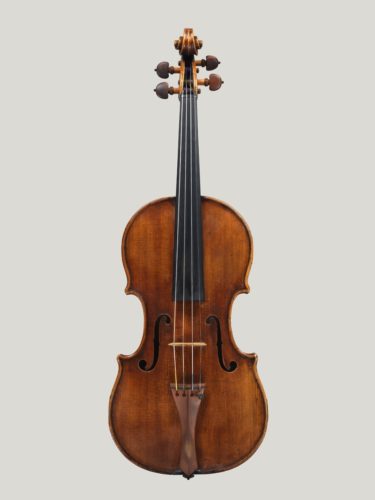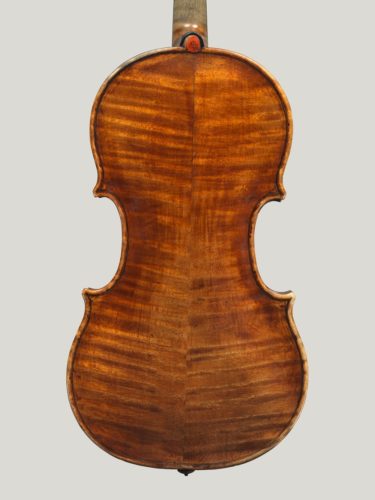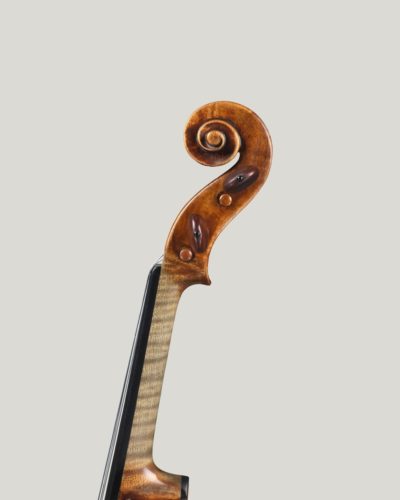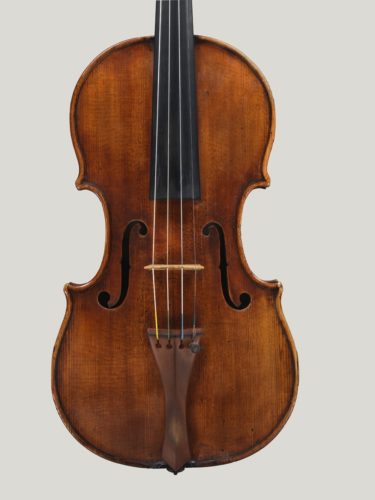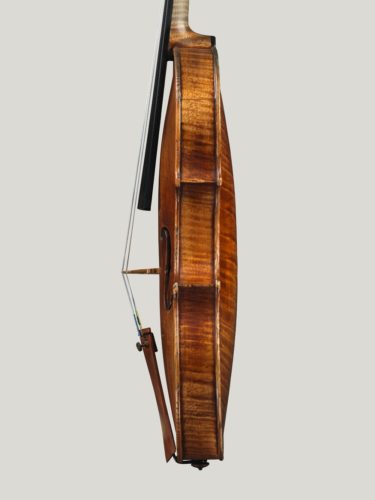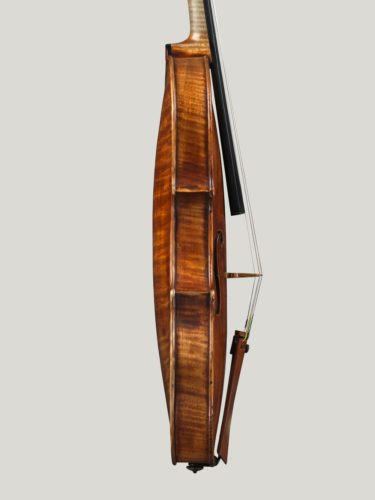Matteo Gofriller
Violin made by Matteo Gofriller in Venice in 1721. Øyvind Bjorå plays on this instrument.
Matteo Gofriller, one of the most important seventeenth century Venetian violin makers, was a particularly versatile craftsman. His work was strongly inspired by his contemporaries in Cremona in the west, both the Amati family and Antonio Stradivari, as well as the highly distinguished Austrian maker Jacob Stainer to the north.
In this he reflects his origins in the Tyrolean border region town of Bressanone, which has the alternative German name of Brixen, occupying a strategic position at the foot of the Brenner Pass, linking Innsbruck with Venice. Gofriller would have grown up equally familiar with Germanic and Italian influences, and quite probably was first introduced to violin making by Tyrolean craftsmen, before embarking on his move to Venice.
This violin of 1721 is however a very pure and well-modelled copy of an Antonio and Hieronymus Amati, made some 100 years previously in Cremona. It shows Gofriller’s ability to work finely and with great discipline, in contrast to the broad, almost improvisatory style often seen in his cellos. It nevertheless bears all Gofriller’s personal hallmarks, in the small spiral of the scroll, generously rounded edges and most of all the rich red varnish which would never have been a feature of the original Amati on which it was based.
The violin is in exceptionally pure state, with few signs of any damage or intervention apart from the neck and fittings which have been replaced to bring it into modern playing condition, although the pegbox has been replaced. It is also quite unusual to find such a clear, well-preserved label, which gives the date of 1721. A great deal of mis-management has accompanied these beautiful instruments, which has seen unscrupulous dealers removing the original labels and ‘up-grading’ them with facsimiles of better-known names like Amati, Stradivari and Bergonzi. This is of course the ultimate compliment to Gofriller himself, who was obviously intent on emulating those masters himself.
The ready supply of fine materials and varnish ingredients in the trading city of Venice played a large part in the success of violin making, and other crafts, in the city. Gofriller’s work is characterised by beautifully figured maple, almost certainly specially imported from the Balkan coast, and his free use of pigment in his varnish, which is thickly applied to the point where often much of the surface is covered with craquelure. On this violin particularly, the rich golden ground underlying the varnish itself is easily discernible, lighting up the complex layers of colour and texture. The maple of the back is outstanding in quality, with a deep curling figure ascending symmetrically from the centre joint. The ribs show a slightly narrower figure, and probably do not originate from the same log. The head, quite typically, is made from plainer maple, which is easier to carve into the intricate spiral form. The front is from beautiful straight –grained spruce, almost certainly brought especially for instrument making from the high alps, where growing conditions are perfect for fine resonant tonewood.
Matteo Gofriller was blessed with an almost perfect environment for his chosen craft, geographically, culturally and economically. He made very full use of all his opportunities, and left a fine legacy of great work, in a rich and fascinating variety.
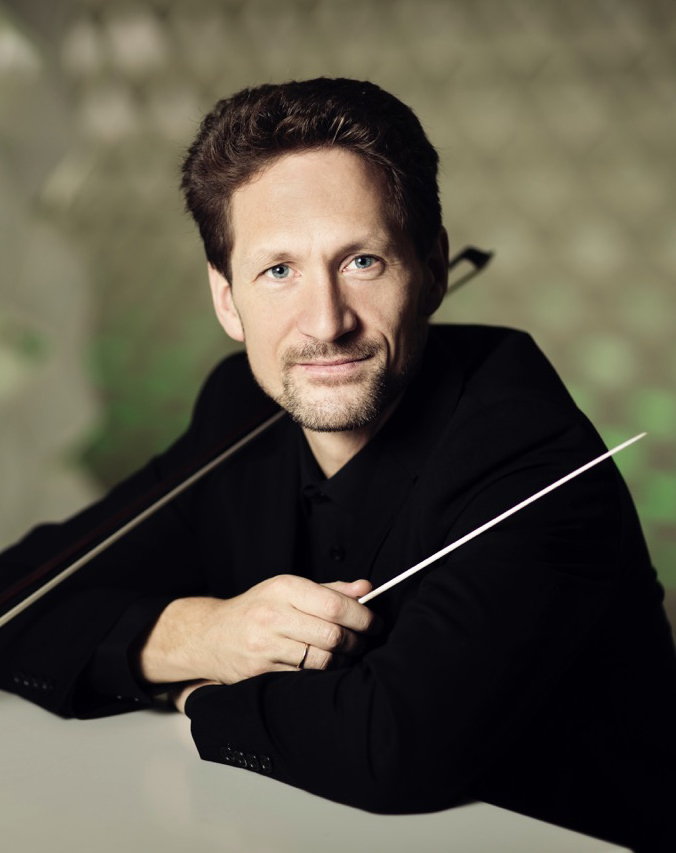
Øyvind Bjorå
Øyvind Bjorå, (b. 1974) is a versatile violinist who has distinguished himself as a leader of orchestral ensembles. He currently leads the Norwegian National Opera Orchestra. (Photo by: Nikolaj Lund)
